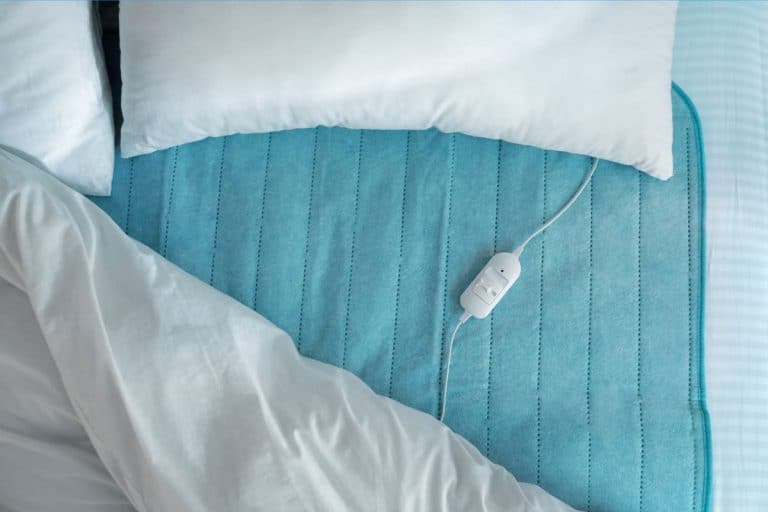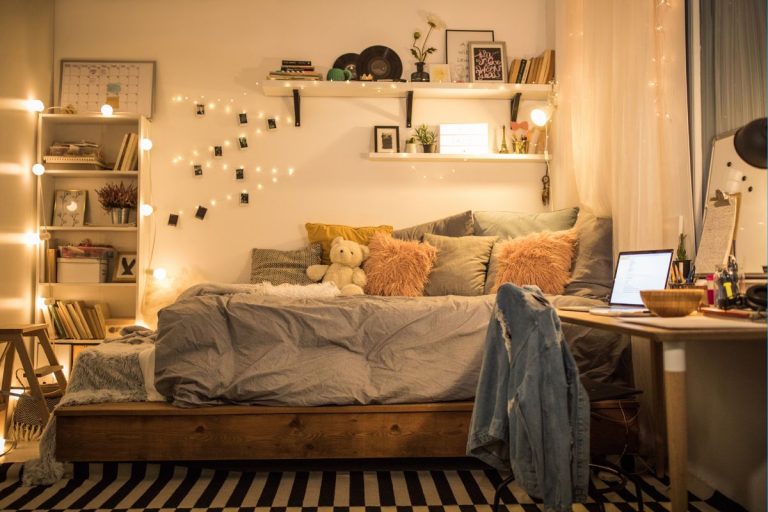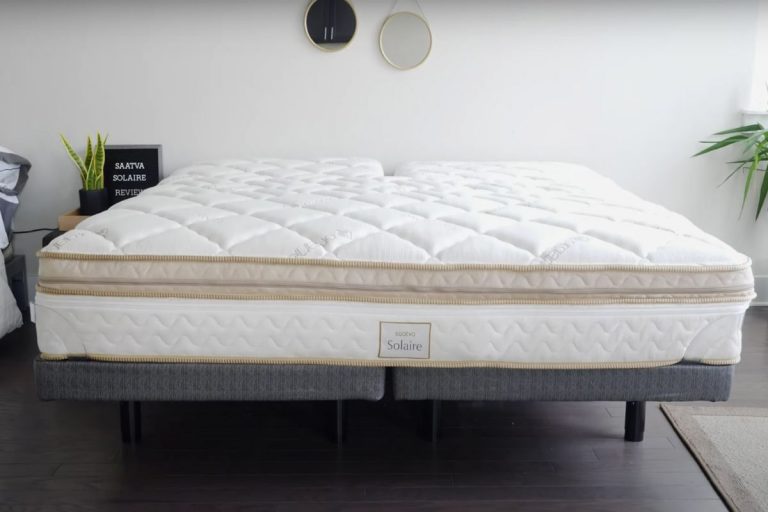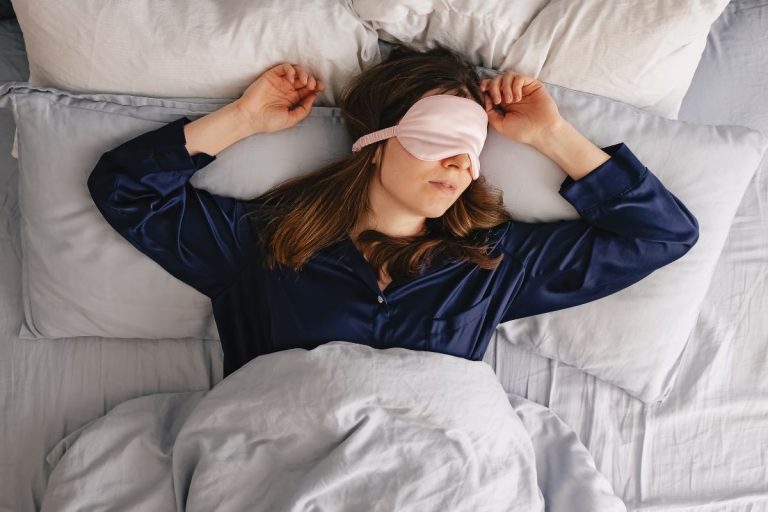For many people, the colors in their home are a big deal, and for a good reason. The color of paint we apply to our dwellings, as well as the colors in our upholstery and other decor are the most visible reflection of your personality and style that visitors see when they walk into your home.
However, the colors we expose ourselves to daily can have significantly more far-reaching consequences.
One 2014 report in the Annual Review of Psychology reveals a profound influence of the colors we come in contact with on several understated aspects of our life experience.
According to this study, the colors can have a profound effect on everything from how food tastes, how likely you are to make a purchase, how inviting and relaxing your room feels, to even how good the sleep you are getting is.
How Colors Affect Your Sleep
Half the road to getting better sleep is getting your sleeping environment just right. A good mattress, supporting pillows, setting the temperature a little lower, and blocking out light with blackout curtains can all immediately enhance your sleeping experience.
However, one frequently overlooked yet critical factor is your bedroom colors.
In a 2013 survey by Travelodge that gathered reports from 2,000 British homes, researchers found huge disparities in how much sleep participants were getting depending on their bedroom color.
This review reported a massive 2-hour difference between the amount of sleep people with the most conducive color and those with the worst option were getting.
Because we need 7-9 hours of sleep for full rest and proper function, your bedroom color choices may be leaving you in a sleep-deprived state.
While these color rules apply to the majority of the population, like with most subjective phenomena, the effect of a specific color may vary based on age, gender, culture, and personal experience or preferences.
Are you working on optimizing your bedroom for the best sleeping experience? A new paint job may be the clincher, and here are the top colors you should consider according to color psychology.
Best Colors for Your Bedroom According to Science
When choosing colors for your bedroom, a good rule of thumb to follow is to opt for cool tones.
Cooler colors like blue and green have relatively shorter wavelengths that can create a more relaxing feel as opposed to warmer colors like red, which are significantly more stimulating and alerting, the exact opposite of what you want when winding down.
Even with cool colors, avoid paints with a glossy finish. The sheen such paints can reflect light and completely negate the calming effect of the color. Opt for flat finish instead.
Most neutral colors are also excellent picks for the bedroom as they reflect a relaxing sense of nature. Hence, it is no surprise that neutral or earthy themes often feature extensively in upscale hotels and spas, as well as in most bedding sets.
Are you ready to start your new sleep-friendly paint job? According to science, the top colors for better sleep include:
Best Option: Blue
Travelodge Survey Sleep Report: 7 hours, 52 minutes
At number one spot is the color blue. Blue is an unsurprising entry for many, as a 2012 report by House Beautiful found blue to be America’s favorite color, accounting for 29% of all votes.
Plus, it is quite easy to see why blue could help you destress. The color is one of the most abundant in nature, and the most commonly associated themes include the splashing ocean and cloudless skies on a laid back summer day, two of the most calming there is.
In the sleep survey by Travelodge, respondents voted blue to clear winner with people with blue bedrooms reporting a decent 7 hours, 52 minutes of daily sleep.
Furthermore, another report from the University of Kentucky found a correlation between exposure to blue and green with feelings of peace as well as calming physical responses like a reduced pulse rate and lower blood pressure.
Hence, blue is one of the best bedroom color choices for enhanced relaxation. The soothing and calming responses it creates can engender better sleep, prevent nightmares, improve your waketime mood, and promote general well being.
Tip: Opt for muted shades of blue, as these options best mimic natural themes and are most conducive to better sleep.
Also Read: 60 Blue And Grey Bedrooms Ideas To Relax: Trendy Designs To Offer Calmness
Runner Up #1: Yellow
Travelodge Survey Sleep Report: 7 hours, 40 minutes
Yellow is another color that often evokes a strong emotional and physical response. Yellow is one of the most visible colors, typically bringing with it a radiant glow that simulates the luminosity of sunshine and arousing uplifting feelings of joy and happiness.
However, when it comes to choosing a color for your bedroom, with yellow, you have to be careful as small changes in shades can create entirely different experiences.
Yellow is a cheery color, and brighter hues can be quite stimulating and energy-boosting, and as such, they are a complete no-no for your bedroom. However, less invigorating shades like light yellow or dull yellow are some of the best options for promoting relaxation and sleep.
These muted shades bring all the warmth and comfort associated with the color but in soft, soothing hues that cut out all of the intense stimulation.
Consequently, cool yellow tones can be an excellent choice for any bedroom as they help create a much welcome happy yet relaxed vibe.
Runner Up #2: Green
Travelodge Survey Sleep Report: 7 hours, 36 minutes
Sooner or later, green had to come upon this list. All it takes is one walk through the woods to become convinced of this color’s viability in fostering relaxation and promoting better sleep.
Green’s strong association with nature means that it is a natural fit for our living environments. One strong element that supports this position is the fact that our eyes evolved first to see green, as it is the easiest color for the human eyes to see.
Just like lounging out in nature, a green bedroom can help to foster feelings of calm, relaxation, safety, and peace. Hence, picking out soothing shades of green for your bedroom can help create that perfect haven for winding down from all the bustle of daily life.
Some of the most beautiful and calming shades you can consider are aqua, yellow-green, dark green, and olive green. However, with green, you get a lot more freedom of choice, as you can rarely go wrong with this color.
Colors to Avoid
Besides the colors we recommended above, in your bedroom, you can also feature pastel, muted, and lighter shades of many different colors as well as calming skin-based or neutral tones without detracting from your sleeping experience.
However, to create a welcoming, relaxing haven that helps you wind down faster and smoother, you should consider avoiding these colors:
Purple
Travelodge Survey Sleep Report: 5 hours, 56 minutes
For thousands of years, in many societies around the world, the use of purple was exclusive to royals and aristocrats. Even today, the color still connotes luxury in many spheres.
However, according to the sleep research by Travelodge, purple is the worst option you could pick for your bedroom. This color is one of the more stimulating options as Color Psychology explains that it inspires creativity, which on the flip side, can instigate more intense dreams and nightmares.
Gray
Travelodge Survey Sleep Report: 6 hours, 12 minutes
While gray may seem like the perfect muted neutral color for your sleeping space, excessive use of gray in your bedroom can create a somber, even depressive vibe, that may detract from your general well being.
Also Read: 50+ White And Grey Bedroom Ideas: Learn To Decorate With Style
Red
Travelodge Survey Sleep Report: 6 hours, 58 minutes
There is a reason why stop signs, traffic lights, and various warning symbols all feature the color red. In essence, the color is the most contrasting to green and nature, creating an alerting image that immediately heightens our senses.
While this invigorating characteristic of red can be excellent for inspiring passion and energy in the bedroom, this can create an agitating environment that impedes restfulness.
FAQs on Bedroom Colors
What Color Should I Paint My Kid’s Room?
Young children typically prefer warmer colors and balk over the thought of neutral or overly cool colors.
Hence, you may need to factor in their preference in the painting decision. However, irrespective of the color you agree on, opt for muted or lighter options as these are best for promoting restful sleep.
Some cheery, kid-friendly yet sleep-conducive options include softer and lighter shades of pink, orange, and yellow.
Also Read: 40+ Cute Bedroom Ideas: Add More Life To Your Room (2023 Updated)
Do these Recommendations Apply to Lights too?
No. With bedroom lights, the color doesn’t matter as much as the type of light. Beware of fluorescent bulbs and LEDs, as these types produce blue light which can suppress the production of melatonin, the sleep hormone, and impede sleep and relaxation. Also, dimmer light can help create a cozy, sleep-enhancing vibe.
Also Read:




